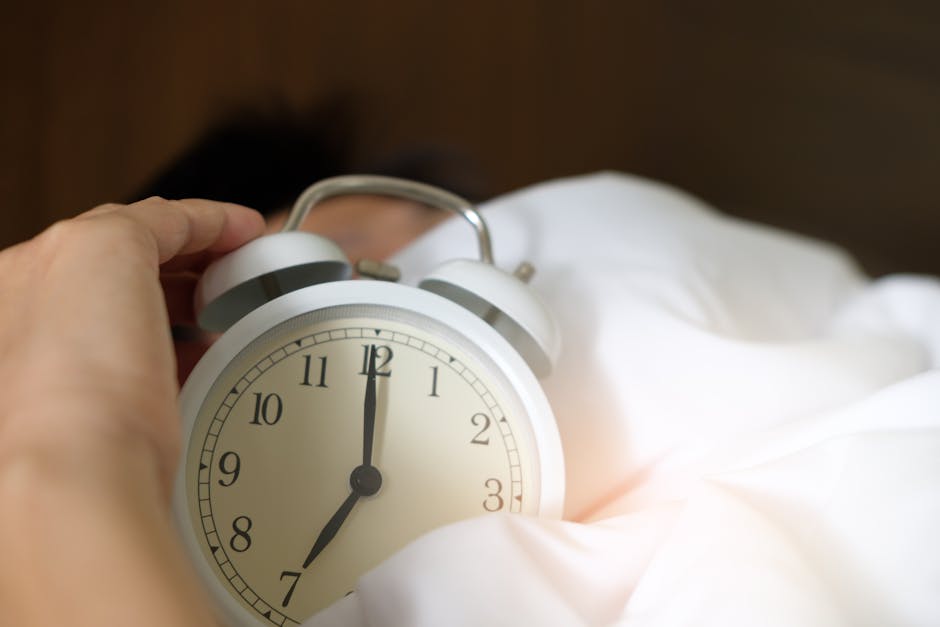Sleep Apnea: An Unseen Threat to Healthy Sleep
I. Introduction
Sleep apnea is a serious sleep disorder that occurs when a person’s breathing is interrupted during sleep. This condition can lead to numerous health problems if left untreated, as the body and brain may not get enough oxygen. It’s a common yet often undiagnosed condition, affecting millions of people worldwide.
According to the American Sleep Apnea Association, an estimated 22 million Americans suffer from sleep apnea, with 80 percent of moderate to severe obstructive sleep apnea cases undiagnosed. This prevalence highlights the need for increased awareness and understanding of this condition.
The impact of sleep apnea on health is significant. It can lead to high blood pressure, heart disease, stroke, diabetes, depression, and other serious health problems. Therefore, understanding the types, symptoms, risk factors, and treatment options for sleep apnea is crucial for maintaining good health and well-being.

Photo by Acharaporn Kamornboonyarush on Pexels
II. Types of Sleep Apnea
There are three main types of sleep apnea: Obstructive Sleep Apnea (OSA), Central Sleep Apnea (CSA), and Complex Sleep Apnea Syndrome (CompSAS). Each type has different causes and may require different treatment approaches.
Obstructive Sleep Apnea (OSA) is the most common type, affecting millions of people worldwide. It occurs when the muscles in the back of the throat fail to keep the airway open, causing breathing to stop and start during sleep. Central Sleep Apnea (CSA), on the other hand, is less common and involves the brain failing to signal the muscles to breathe due to instability in the respiratory control center.
Complex Sleep Apnea Syndrome (CompSAS), also known as treatment-emergent central sleep apnea, is a combination of both OSA and CSA. It’s usually discovered during treatment for OSA when a patient continues to have apnea events even while using continuous positive airway pressure (CPAP) therapy.
III. Symptoms and Diagnosis
Common symptoms of sleep apnea include loud snoring, episodes of breathing cessation during sleep, abrupt awakenings accompanied by gasping or choking, morning headache, excessive daytime sleepiness, difficulty concentrating during the day, and mood changes. However, not everyone who snores has sleep apnea, and not everyone who has sleep apnea snores. Therefore, understanding the other symptoms is crucial for early detection.
Diagnostic methods for sleep apnea include a physical exam, a sleep study (polysomnography), and home sleep tests. A sleep study is the most accurate test for diagnosing sleep apnea. It records brain activity, eye movements, heart rate, and blood pressure while the patient sleeps.
Early detection of sleep apnea is crucial to prevent its potential complications, such as heart disease, stroke, high blood pressure, and diabetes. It can also improve quality of life by reducing daytime sleepiness, improving concentration, and minimizing mood changes.

Photo by Ivan Oboleninov on Pexels
IV. Risk Factors and Causes
Several factors increase the risk of developing sleep apnea. These include age, gender, and family history. Sleep apnea can occur at any age, but it’s more common in middle-aged and older adults. Men are more likely to develop sleep apnea than women. Additionally, having a family history of sleep apnea can increase your risk.
Obesity and excess weight are significant risk factors for sleep apnea. Excess fat deposits around the upper airway can obstruct breathing. Furthermore, lifestyle habits such as smoking and alcohol consumption can also increase the risk of sleep apnea. Smoking can increase inflammation and fluid retention in the upper airway, while alcohol can relax the muscles in the throat and can interfere with normal sleep.
Other underlying health conditions, such as chronic nasal congestion, heart disorders, and hormonal disorders, can also increase the risk of sleep apnea. Regular check-ups and maintaining a healthy lifestyle can help in early detection and management of these risk factors.
V. Treatment Options
The most common treatment for sleep apnea is Continuous Positive Airway Pressure (CPAP) therapy. It involves wearing a mask over the nose and/or mouth while sleeping. The mask is connected to a machine that delivers a constant flow of air to keep the airways open. This treatment is highly effective but requires commitment and lifestyle adjustments.
Oral appliances and dental devices can also be used to treat sleep apnea. These devices are designed to keep the throat open by bringing the jaw forward, which can help relieve snoring and mild obstructive sleep apnea. Furthermore, lifestyle changes such as weight management, quitting smoking, and reducing alcohol consumption can also help manage sleep apnea.
In severe cases, surgical interventions may be considered. These include uvulopalatopharyngoplasty (removal of tissue from the back of the mouth and top of the throat), maxillomandibular advancement (moving the jaw forward to open the upper airway), and tracheostomy (creating a new air passageway).

Photo by Andrea Piacquadio on Pexels
VI. Complications and Long-term Effects
Sleep apnea can lead to several serious health complications if left untreated. These include cardiovascular problems such as high blood pressure, heart disease, and stroke. The repeated episodes of low oxygen levels during sleep can strain the cardiovascular system, leading to these complications.
Daytime sleepiness and impaired cognitive function are also common complications of sleep apnea. Excessive daytime sleepiness can lead to difficulties at work or school, problems with attention, and an increased risk of accidents. Impaired cognitive function can lead to memory problems, difficulty concentrating, and mood changes.
Furthermore, sleep apnea can have a significant impact on mental health, leading to depression, anxiety, and irritability. It can also affect relationships and social interactions due to snoring and other symptoms. Therefore, managing sleep apnea is crucial not only for physical health but also for mental well-being and quality of life.
VII. Tips for Managing Sleep Apnea
Creating a sleep-friendly environment is crucial for managing sleep apnea. This includes maintaining a cool, quiet, and dark bedroom. Using a humidifier can also help by keeping the throat moist and reducing snoring and congestion. Regular exercise and establishing a regular sleep schedule can also improve sleep quality and reduce sleep apnea symptoms.
Maintaining a healthy lifestyle is another important aspect of managing sleep apnea. This includes eating a balanced diet, maintaining a healthy weight, quitting smoking, and limiting alcohol consumption. Regular exercise can also help strengthen the muscles in the throat, improve breathing, and promote better sleep.
Seeking support and professional guidance is also crucial. Joining a support group can provide emotional support and practical tips for dealing with sleep apnea. Regular check-ups and consultations with a healthcare provider can also help monitor the condition and adjust treatment plans as needed. Meditation and balance exercises can also help manage stress and promote better sleep.
VIII. Conclusion
Sleep apnea is a common yet often undiagnosed sleep disorder that can have serious health implications if left untreated. Understanding the types, symptoms, risk factors, and treatment options for sleep apnea is crucial for early detection and effective management.
Seeking treatment and support is essential for managing sleep apnea and improving quality of life. This includes medical treatments such as CPAP therapy, lifestyle changes, and seeking support from healthcare providers and support groups. Remember, a good night’s sleep is not just a luxury—it’s a necessity for good health and well-being.
Finally, let’s encourage each other to prioritize our sleep health. By spreading awareness about sleep apnea, we can help more people get the help they need. Let’s strive for healthier sleep routines and better overall health. #SleepApneaAwareness #SleepDisorder #CPAPtherapy #SleepApneaTreatment #BetterSleep



